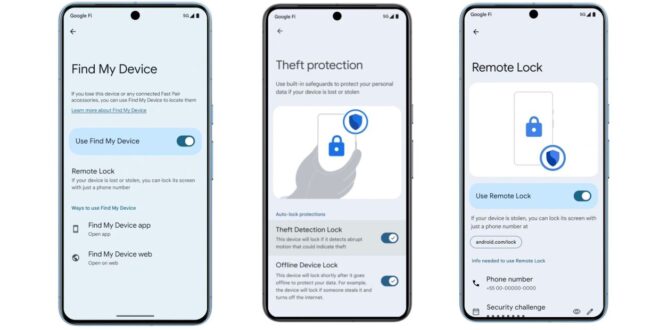To protect smartphones and, above all, the sensitive personal data stored on them, Google will be launching a new series of anti-theft features.
Making a factory reset harder for thieves
Google is going to update the classic factory reset to make it virtually impossible for a thief to use this function. Indeed, when a smartphone is stolen, the first thing a thief does is to reset the device so that they can use it or sell it.
Google’s idea is to make this impossible. From now on, it will be necessary to know the device owner’s Google account details in order to be able to configure it again after forcing a reset.
In addition, a “Private Space” will be reserved for sensitive applications. This new feature will create an area in your phone that can only be accessed with a separate access code. This will make it possible to secure certain sensitive applications and all their related data, notably anything to do with health or banking.
Finally, Android will protect access to sensitive settings such as “Find My Device” by requiring users to enter their access code or biometric data. These measure could help discourage many a thief.
Automatic lock when theft is detected
Perhaps the most spectacular announcement concerns Android’s incoming ability to automatically detect suspicious signs signaling theft, then to proactively protect data on the device by automatically locking the screen.
This new feature will use Google’s artificial intelligence to detect if someone snatches your phone out of your hand and tries to run away with it on foot, on a bike or in a car.
If this type of movement is detected, the phone’s screen will quickly lock, preventing the thief from gaining easy access to personal data. Android will also lock the device’s screen when the number of failed authentication attempts is too high.
Locking your phone remotely from any device
Finally, rather than using the “Find My Device” app (or online platform), Google promises that it will soon be possible to remotely lock your smartphone simply by using your phone number and a quick security test, from any device.
Most of these new features will arrive later this year in the form of updates to Google Play Services, for all devices running Android 10 or later. Updates for “Factory Reset Protection” and “Private Space,” meanwhile, will initially be available exclusively on Android 15, expected in the fall.
Meanwhile, iPhone owners have a slew of new anti-theft features, too, since Apple updated iOS with new features in this regard at the beginning of the year. These include “Stolen Device Protection,” which requires the use of Face ID to gain access to your saved passwords and therefore to your most sensitive applications. In addition, the iPhone can no longer be factory reset without its access code. – AFP Relaxnews
 BeritaKini.biz Berita Viral Terkini di Malaysia
BeritaKini.biz Berita Viral Terkini di Malaysia





